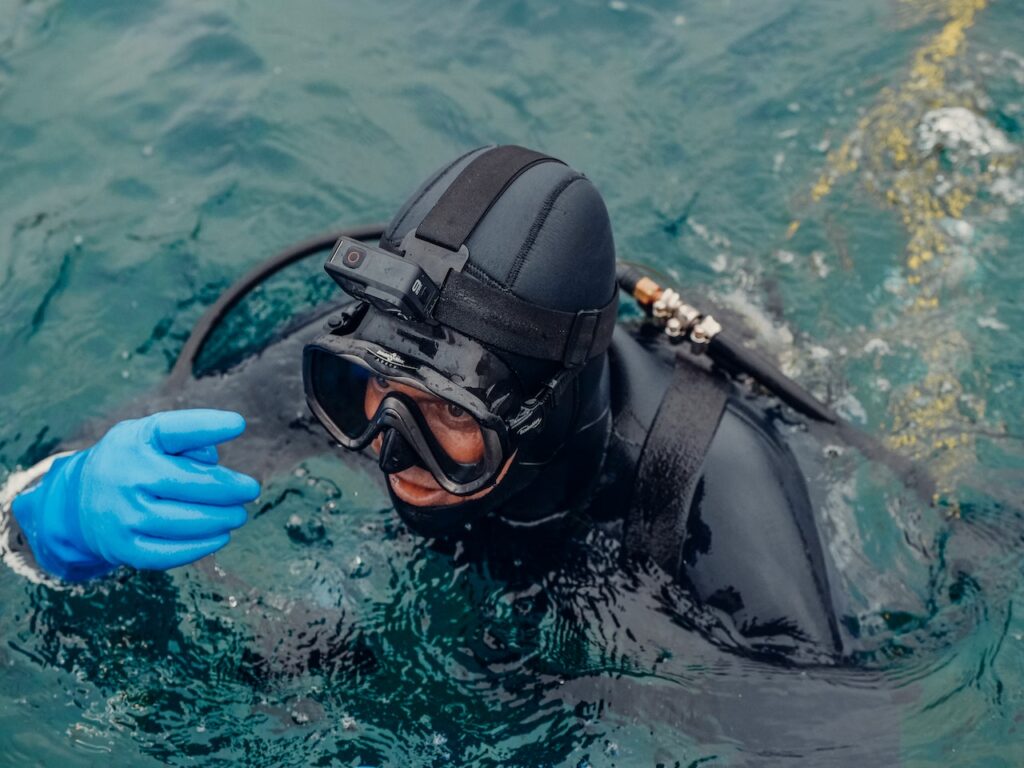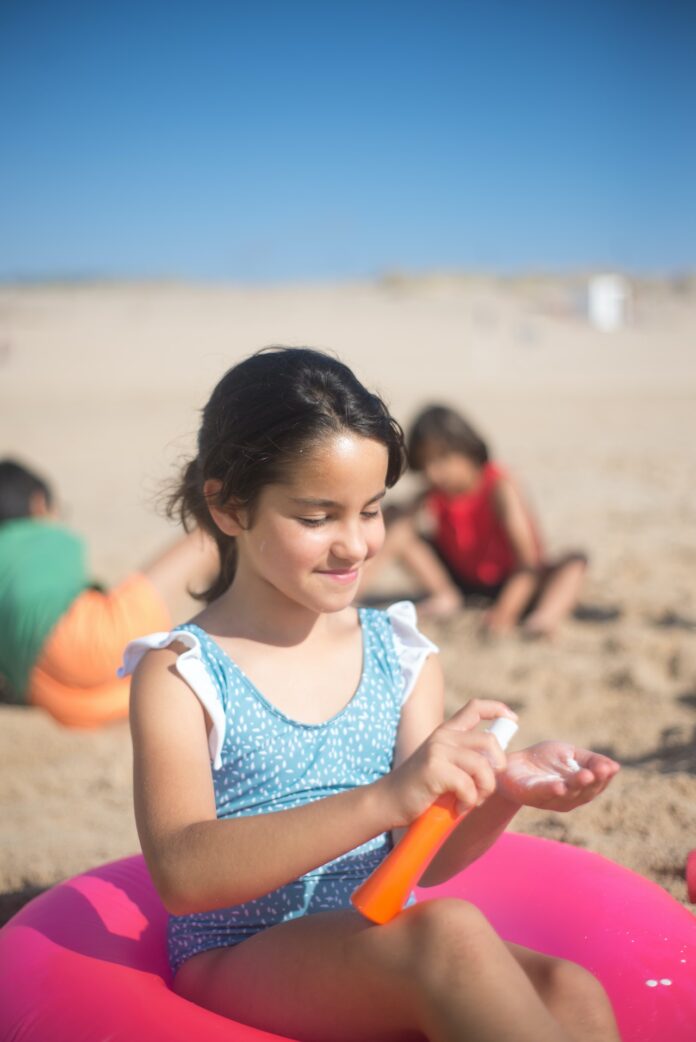Did you know that UVA, the most penetrative of the UV rays, can go even beyond your skin and damage your muscles to cause premature aging?
On one hand, sun exposure is necessary for vitamin D production inside humans, but on the contrary, sun rays are the leading cause of skin cancers. Therefore, dermatologists advise using sunscreen and other sun protection products whenever we go out in the sun. Sun protection can comprise a combination of sun-protective clothing, SPF hats, glasses, etc., to guard your skin against harmful UV rays.
Check out the following tips to understand when and how to use the right form of sun protection to guard you and your family against overexposure to UV rays.
-
Wear Sun Protective Fabrics
It is crucial for people to protect their bodies from unaccustomed sunlight. If the skin burns or feels heated up, it is better to put on a layer of protective clothing. Instead of wearing generic cotton t-shirts or bikinis, wear UV Skinz breathable sun protective clothing. This UV clothing is made from UPF 50+ fabric that is clinically proven to block the sun’s rays. Hence, you get the maximum protection against UVA and UVB rays.
The advantage of choosing sun protective fabrics and UV blocking clothes is that you do not have to keep re-adjusting your sun protection as with the use of sunscreens. Also, many people don’t generally use the recommended amount of sunscreens to achieve proper UV protection. Hence, for those who want to protect themselves from UV exposure with the least hassle, sun protection clothing can come in handy.
-
Sunscreens for Face And Hands
Sun protective clothing can cover most of your body from UV exposure. Yet for areas of skin like your face and the back of your arms, covering them with clothes may not be practical. This is when you would need sunscreens.
The most basic and widely known component of skincare regimes is sunscreen, which is not skippable. It does not matter if it is winter or summer; you should wear SPF every day.
Start your day by applying a moisturizer followed by sunscreen, and keep reapplying it throughout the day if you are facing prolonged exposure to the sun.
Even when wearing sunscreen and staying in the shade, try limiting your time in sunlight as much as possible. Try staying indoors when the sun is at its peak because it not only damages your skin but also dehydrates your body.
-
Protect Your Lips
Lips are also a part of the skin and get exposed to sunlight just like the rest of the body parts. Most people take care of other areas of the body and forget about protecting their lips from UV radiation.
Invest in special lip care balms and sticks to prevent your lips from drying and burning. This step of sun protection is especially essential for those prone to blisters and dry patches on their lips.
-
Buy an SPF Hat

In some regions of the world, even wearing strong sunscreen does not suffice. People inhabiting such areas need to go the extra mile to protect their skins from damage. One of these protective measures is using SPF hats for sun protection. These wide-brim hats can protect your face, neck, and the back of your ears from getting sunburns.
If you expect most of your day outdoors, cover up as much as possible, especially if you are prone to redness and blisters.
-
Sunglasses with SPF
In the summer, sunglasses become more than just fashion accessories. On blazing sunny days, you should have some additional tools to protect your eyes from sun damage.
Look for a pair that blocks at least ninety percent of the radiation and offers maximum safety for your most sensitive part of the body.
-
Carry an Umbrella
While most think sand and water deflect UV radiation, not letting them reach their bodies, this is not the case. These surfaces can reflect UV radiation to you, thus increasing your risk of getting sunburns.
Use an umbrella if you go to the beach or even step outdoors for work; most of them come with added UV protective factors nowadays.
-
Relax Under a Shade
Who does not like to sip margaritas and relax under the sun? But the truth is that on blazing summer days, the skin burns faster than usual. So, even if you want to enjoy a little sun, try relaxing under a shade and sitting opposite to sunlight.
If you notice sunburn, take immediate steps to prevent it from getting worse. Use a soothing gel for rashes, redness, and blisters.
-
Safe Swimming with UV Swimwear

Summer is the time for beaches and water sports, but one should not forget sun protection. To protect yourself from UVA and UVB waves at the beach, buy UV swimwear. Buy UV swimwear can offer sun protection both in and out of water. This can be a great choice, especially for children who often tend to have little patience for the application of sunscreens.
-
Check UV Index Before Stepping Out
UV index represents the expected intensity of UV radiation using numbers between 1 and 11. You can protect yourself from the rays only when you know what to expect when heading out of the home.
Once you know the UV index outside, you can easily figure out if a sun protective umbrella would suffice or if you need an SPF hat and sunglasses to go with it.
-
Artificial Tanning Over Sun Tan
Try tanning artificially if you like a sun-kissed glow on your skin. Tanning lotions and sprays are a better way to go compared to lying in the sun for hours. Unfiltered exposure to the sun might give you a beautiful skin color for a few weeks but hurt you in the long run. The effects will become prominent as you age, and that does not look very nice.
Several types of tanning creams are available in the market now, but generally, look for one that offers water and sun protection.
Final Thoughts
Why exactly should you care about UV exposure?
Because people who spend their days out for work or play without SPFs are at increased risk of skin cancer and sunburns. The most common signs of sunburn include redness, itching, dryness, rashes, and blisters. If you notice any of these, take the necessary steps to soothe them and consult a dermatologist if they do not disappear.
If you go out in the sun and see noticeable effects, you will see them in the long run in the form of wrinkles, discoloration, and dark spots.
FAQs
- How many times should I apply sunscreen?
Your sunscreen might have instructions about reapplication, but it’s necessary to refresh your sunscreen after every two to three hours.
- What SPF is good for me?
Your SPF may vary depending on your region and sun exposure, but you must own no less than SPF30.
- What parts of the body need protection?
Every body part exposed directly to the sun’s rays needs protection, including the face, lips, neck, arms, torso, legs, and feet.
- What is the difference between UPF and SPF?
SPF is for skin, whereas UPF is for sun-protective fabrics that utilize functional design to prevent the skin from sun exposure.














